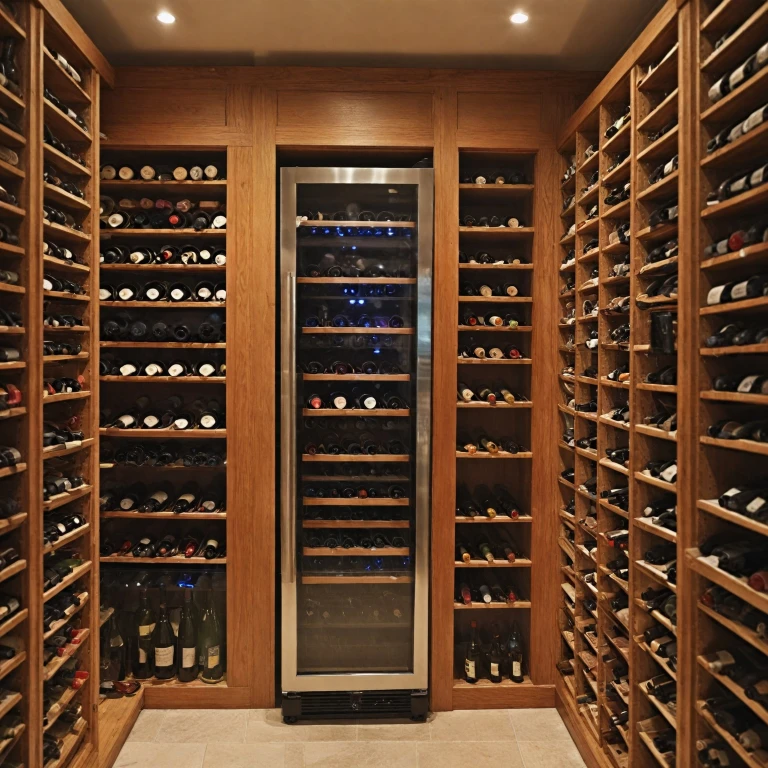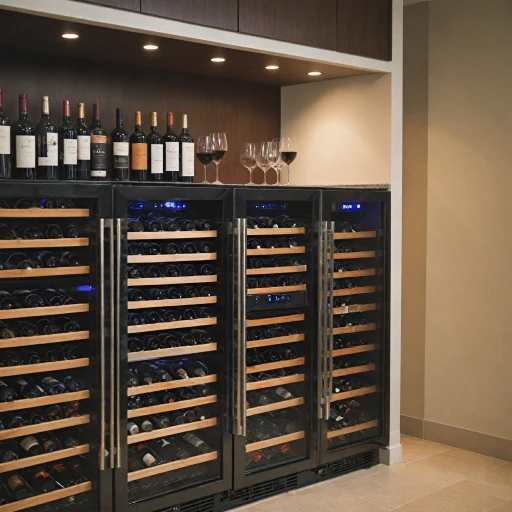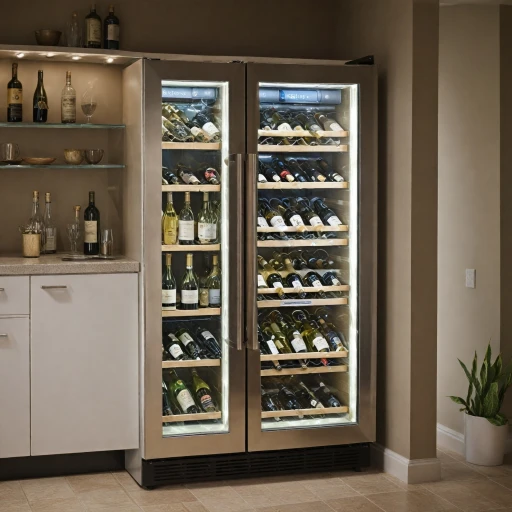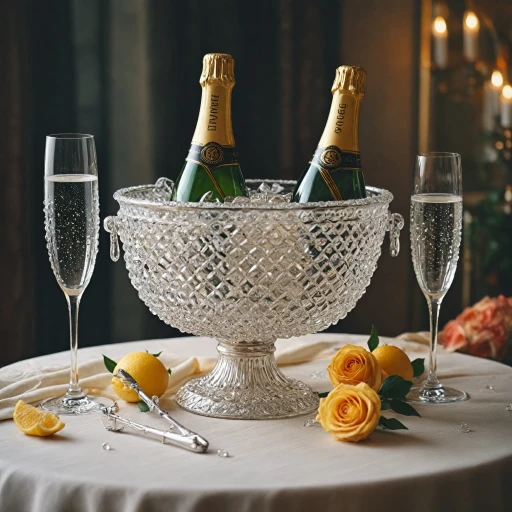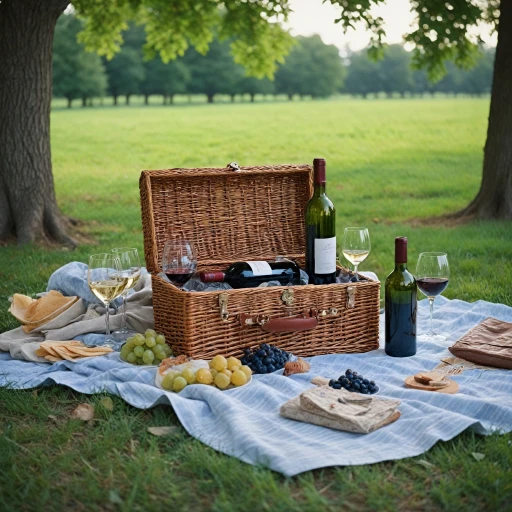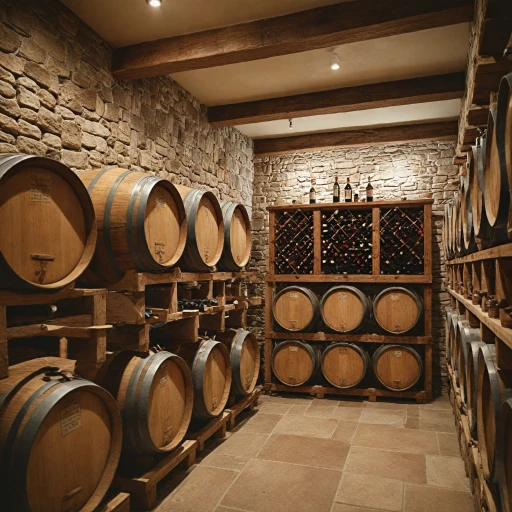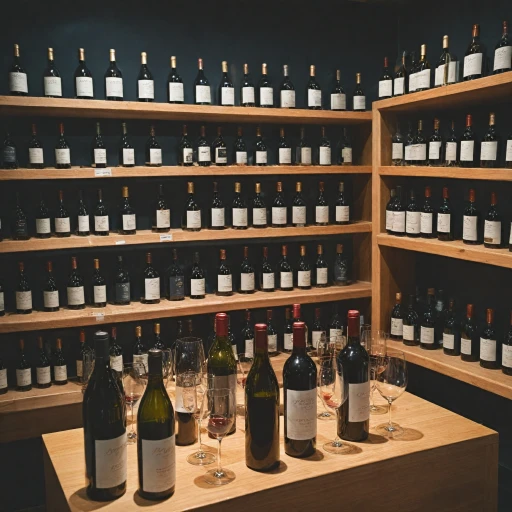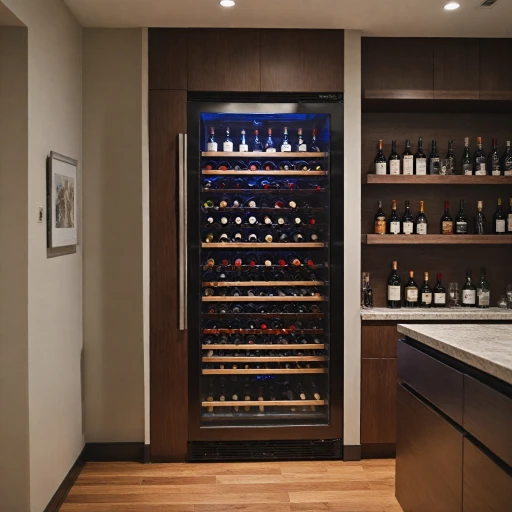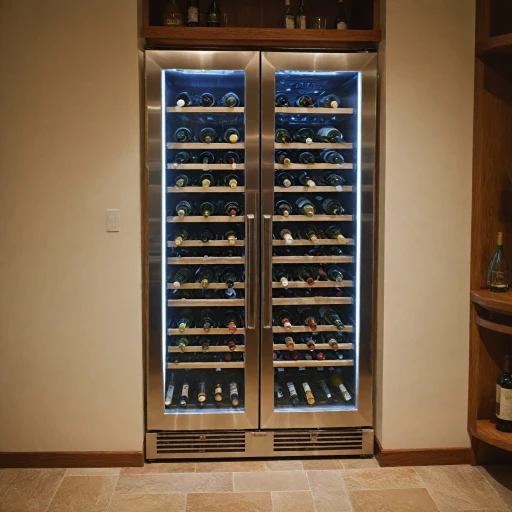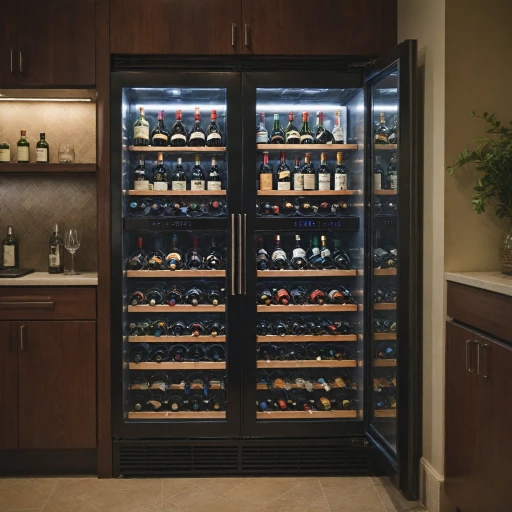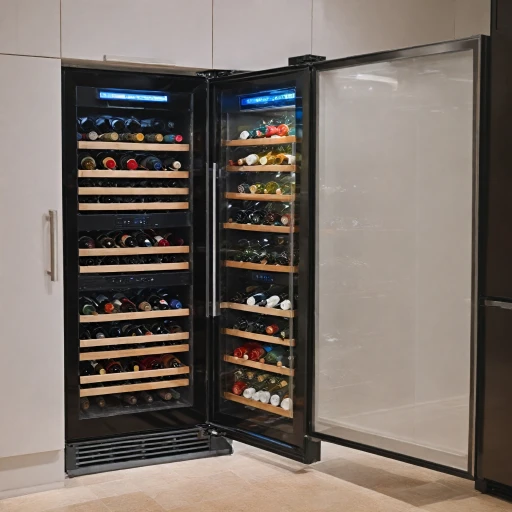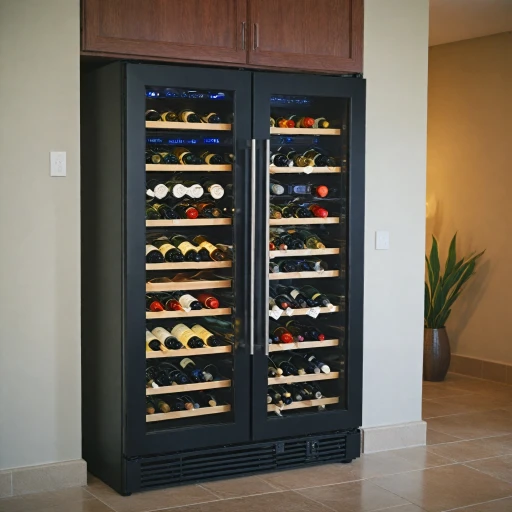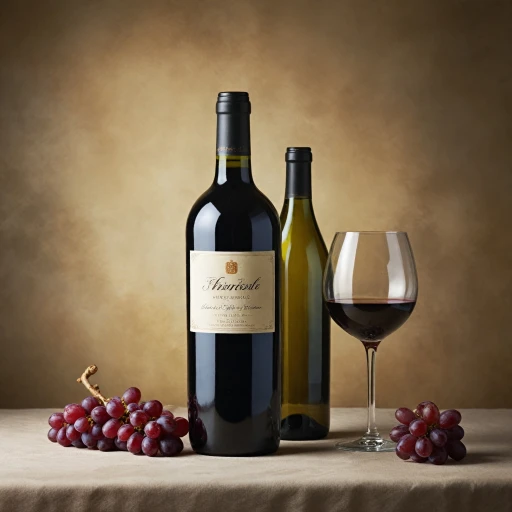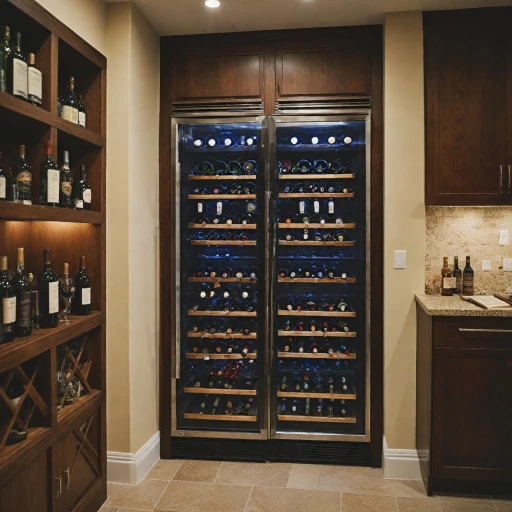
Understanding Wine Cooler Temperatures
Finding the perfect temperature for your wine
Maintaining the right temperature in your wine fridge or cellar is crucial for preserving the quality and enhancing the taste of your wines. Wine enthusiasts understand that the ambient environment where wine is stored plays a significant role in the ageing process, influencing aroma and flavor profiles. While one might think that any standard fridge could work for wines, a specialized wine cooler or a climate-controlled cellar is ideal to achieve optimal conditions. Wine coolers provide the perfect setting for storing and serving wines due to their ability to maintain a stable temperature range. Unlike a typical fridge, which fluctuates in temperatures, a wine cooler can be set to specific storage temperatures, allowing you to store wines at consistent conditions. Understanding the art of wine storage is crucial to maintaining wine quality over time, and wine coolers are specifically designed to address this need. For enthusiasts seeking to store both red and white wines, a dual zone wine cooler could be an excellent investment. Such coolers enable different sections of the cooler to be set to distinct temperature ranges, catering to the unique needs of each variety—offering flexibility whether your preference is to drink wine at room temperature or properly chilled. Understanding these details is key to appreciating the complexity of wine storage and ensuring you're getting the best out of each bottle. Regardless of color, almost all wines benefit from stable storage temperatures between 45°F to 65°F, but understanding the specific needs of red, white, and sparkling wines will guide you to tailor the temperature settings for the best experience. Proper serving temperature will also play a role in enjoying your wines to their full potential, as explored in the sections on red and white wine guidelines. For more insights, consider delving into more detailed resources on the optimal temperature settings and the general importance of precision in wine storage practices: understanding the art of wine storage.Red Wine Storage Guidelines
Proper Care for Storing Red Wines
Red wine deserves careful attention when it comes to its storage temperature. One key takeaway is to avoid storing red wines at room temperature for prolonged periods. The optimal storage temperature range for red wine is typically between 55°F and 65°F (13°C and 18°C). This range ensures that the wine is stored in conditions that preserve its complex flavors and aromas effectively.
Using a wine cooler or cellar designated for red wines can serve this purpose well. When selecting a wine cooler for red wines, the ability to set specific temperatures is crucial. Some units offer dual zone wine cooling options, allowing you to store wine bottles at different temperatures simultaneously. This could be beneficial if you are storing both red and white wines in one appliance.
The Role of Red Wine Fridges
A designated wine fridge can maintain stable temperatures, an important factor for red wine storage. Consistent temperatures prevent the wine from spoiling or losing its bouquet. It is worth noting that excessive fluctuations can compromise the wine’s integrity. As such, a red wine fridge is an excellent investment for enthusiasts and collectors.
If you are seeking additional insights on how to maintain the optimal conditions for red wines, you might find valuable information on optimal storage conditions especially useful for making informed decisions about your wine cooler or fridge.
White Wine Cooling Tips
Chilling White Wines to Perfection
White wine lovers know the difference that the right temperature can make when it comes to savoring a glass of their favorite vino. White wines are best enjoyed when served slightly cooler than their red counterparts. Having the correct temperature range is essential for fully experiencing the intricate flavors and aromas these wines have to offer.
Typically, white wines ought to be stored at a fridge temperature between 45°F to 50°F (7°C to 10°C). This range ensures that the wine does not lose its nuanced flavors while enhancing its refreshing nature. It's worth noting that some white wines might demand different conditions depending on their style and complexity.
In the dual zone wine fridge, white wines can have their dedicated space where the temperature can be precisely set to match these ideal conditions. Such a setup allows wine enthusiasts to store wine with confidence, knowing that their bottles of white will be served at their best.
For tips on achieving these optimal conditions and further guidance on temperature settings, readers are encouraged to explore more about the appropriate use of wine preservation techniques to maintain their collection's integrity and quality over a long period.
Sparkling Wine Temperature Needs
Perfect Chill for Sparkling Wines
Sparkling wines, including Champagne, Prosecco, and Cava, require specific temperature settings to preserve their effervescence and enhance their flavors. Unlike red or white wines, sparkling wines are best served at cooler temperatures. This ensures that the bubbles remain lively and the taste is crisp and refreshing.
When storing sparkling wines, aim for a temperature range of 45-50°F (7-10°C). This range helps maintain the wine's integrity and prevents the bubbles from dissipating too quickly. A wine cooler with a dual zone feature can be particularly beneficial, allowing you to store sparkling wines at their optimal temperature while also accommodating other types of wines.
It's important to note that while sparkling wines can be stored in a regular fridge for short-term storage, long-term storage in a wine cooler is recommended. Regular fridges often have fluctuating temperatures, which can negatively impact the wine's quality over time. Additionally, storing sparkling wines in a wine cooler minimizes the risk of vibrations, which can disturb the sediment and affect the wine's taste.
For those who enjoy a variety of wines, investing in a wine cooler with adjustable temperature settings is a wise choice. This allows you to set the perfect temperature for each type of wine, ensuring that your sparkling wines are always served at their best.
Common Mistakes in Wine Cooling
Typical Missteps in Preserving Wine
When it comes to storing wines, especially in wine coolers or fridges, there are common mistakes that can affect the quality of the wine stored. Understanding storage temperature and serving guidelines can help prevent these errors and ensure your wine is always at its best.
- Inaccurate Temperature Settings: Setting the incorrect temperature for either red or white wine is a frequent error. Many wine enthusiasts might not realize that even a slight deviation from the ideal range could impact the wine's bouquet and flavor. Red wines generally require a higher serving temperature than white wines, so ensure your wine fridge is set appropriately.
- Overloading the Wine Fridge: While modern wine fridges offer a lot of storage, overpacking them with wine bottles can obstruct proper air circulation. This can lead to uneven cooling and fluctuations in the fridge temperature, which are not ideal for long term storage.
- Ignoring Dual Zone Capabilities: If you own a dual zone wine cooler, it is crucial to utilize each zone according to the specific wine types. For instance, designated zones allow for the storage of red wines at warmer temperatures while maintaining cooler temperatures for white wines and sparkling variations.
- Leaving Wine at Room Temperature: Some may choose to store wine at room temperature, neglecting the advantages of a dedicated wine cooler. Room temperature can significantly influence the preservation quality, particularly for white wine and sparkling types, which are best served chilled.
- Short-term Thinking: Wine storage requires consideration for both immediate consumption and long term aging potential. Therefore, setting up a solid practice for both short and long term storage scenarios is vital.
To avoid these pitfalls, knowledge about ideal wine storage temperatures and understanding your wine fridges' capabilities is key. Proper attention to these details will enhance your overall wine experience whether you store wine for immediate enjoyment or for aging.
Choosing the Right Wine Cooler
Selecting the Ideal Wine Cooler for Your Collection
Choosing the right wine cooler can be the key to preserving the quality of your wine collection. Whether you're storing red wines, white wines, or a variety of both, selecting a cooler that fits your needs is crucial.
A dual zone wine cooler is an excellent choice for those who have a diverse collection. This type of cooler allows for varied storage temperatures - optimal for both red and white wines. With dual zones, you can ensure that reds are stored at a different temperature range than whites, keeping every bottle at its best.
When assessing wine fridges, consider the capacity. Think about the number of wine bottles you currently own and anticipate any future purchases. It's wise to opt for a wine fridge that supports slightly more than your current collection to accommodate growth without cramped storage.
Temperature consistency is paramount for any wine lover. Look for models with advanced cooling technology that maintains a steady storage climate. This is vital for long term storage to prevent premature aging or loss of flavor.
For those focused only on reds or whites, a single zone wine cooler might suffice, keeping each bottle at a specific serving temperature. For example, reds typically do well slightly cooler than room temperature, whereas whites are best served chilled.
Remember, the best wine fridges not only fit your functional needs but also your lifestyle and ambiance, often doubling as an aesthetic addition to your space.

